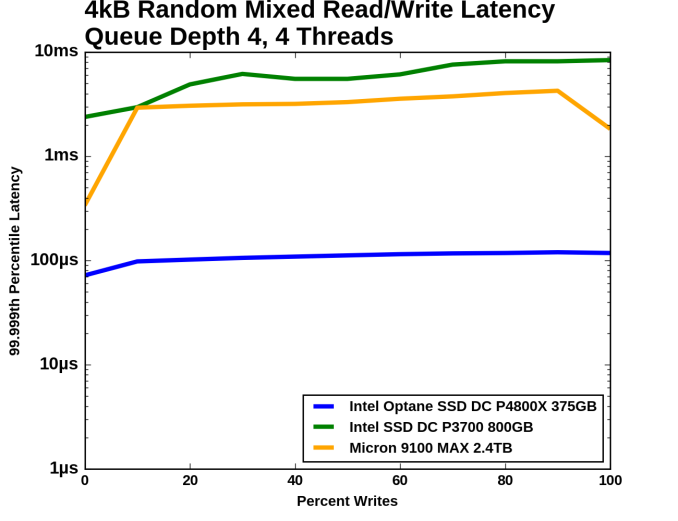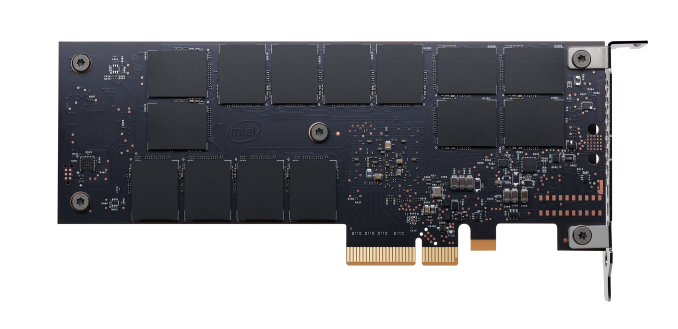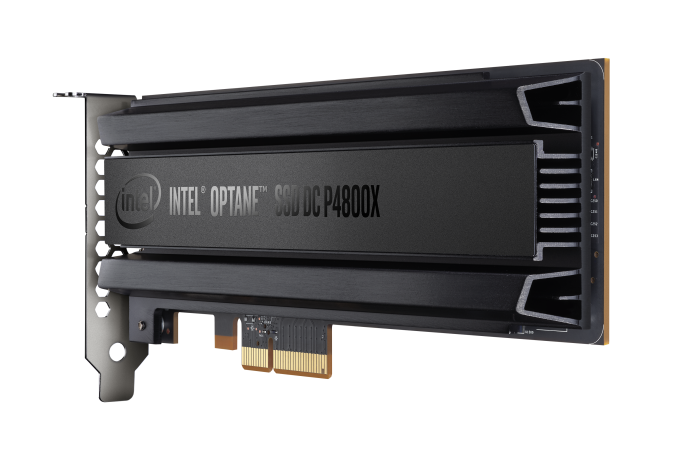The Intel Optane SSD DC P4800X (375GB) Review: Testing 3D XPoint Performance
by Billy Tallis on April 20, 2017 12:00 PM ESTFinal Words: Is 3D XPoint Ready?
The Intel Optane SSD DC P4800X is a very high-performing enterprise SSD, but more importantly it is the first shipping product using Intel's 3D XPoint memory technology. After a year and a half of talking up 3D XPoint, Intel has finally shipped something. The P4800X proves that 3D XPoint memory is real and that it really works. The P4800X is just a first-generation product, but it's more than sufficient to establish 3D XPoint memory as a serious contender in the storage market.
If your workload matches its strengths, the P4800X offers performance that cannot currently be provided by any other storage product. This means high throughput random access, as well as very strict latency requirements - the results Optane achieves for it's quality of service for latency on both reads and writes, especially in heavy environments with a mixed read/write workload, is a significant margin ahead of anything available on the market.

At 50/50 reads/writes, latency QoS for the DC P4800X is 30x better than the competition
The Intel Optane SSD DC P4800X is not the fastest SSD ever on every single test. It's based on a revolutionary technology, but no matter how high expectations were, very rarely does a first-generation product take over the world unless it becomes ubiquitous and cheap on day one. The Optane SSD is ultimately an expensive niche product. If you don't need high throughput random access with the strictest latency requirements, the Optane SSD DC P4800X may not be the best choice. It is very expensive compared to most flash-based SSDs.
With the Optane SSD and 3D XPoint memory now clearly established as useful and usable, the big question is how broad its appeal will be. The originally announcements around Optane promised a lot, and this initial product delivers a few of those metrics, so to some extent, the P4800X may have to grow its own market and reteach partners what Optane is capable of today. Working with developers and partners is going to be key here - they have to perform outreach and entice software developers to write applications that rely on extremely fast storage. That being said, there are plenty of market segments already that can never get enough storage performance, so anything above what is available in the market today will be more than welcome.
There's still much more we would like to know about the Optane SSD and the 3D XPoint memory it contains. Since our testing was remote, we have not yet even had the chance to look under the drives's heatsink, or measure the power efficiency of the Optane SSD and compare it against other SSDs. We are awaiting an opportunity to get a drive in hand, and expect some of the secrets under the hood to be exposed in due course as drives filter through the ecosystem.












117 Comments
View All Comments
ddriver - Friday, April 21, 2017 - link
So if you populate the dimm slots with hypetane, where does the dram go?kfishy - Friday, April 21, 2017 - link
You can have a hybrid memory subsystem, the current topology of CACHE-DRAM-SSD/HDD is not the only way to go.tuxRoller - Friday, April 21, 2017 - link
Why are you mentioning dimms?Are you just posting random responses?
Neither of your posts in this thread actually addressed anything that the posters were discussing.
Kakti - Saturday, April 22, 2017 - link
Have you been living in a cave the past five years? SATA 3.0 has been the limiting factor for SSDs for a while now - all max out around 450MB/sec.Now there are plenty of SSD that connect via PCIe instead of SATA and are able to pull several gigabytes/sec. Examples include Samsung 960 Pro/Evo, 950 Pro, OCZ RD400, etc. SATA has ben the bottleneck for a while and now that we have NVMe, we're seeing what NAND can really do with m.2 or pci-e connections
cfenton - Thursday, April 27, 2017 - link
That speed is only for high queue depth workloads. Even the 960 Pro only does about 137mb/s average in random reads over QD1, QD2, and QD4. The QD1 numbers are something like 34mb/s. Those numbers are far below the SATA spec. Almost all consumer tasks are low queue depth.With this drive, you get about 400mb/s even at QD1, and something like 1.3gb/s at QD4.
CajunArson - Thursday, April 20, 2017 - link
A very very sweet piece of technology assuming you have the right workloads to take advantage of what it can offer. Obviously it's not going to do much for a consumer grade desktop, at least not in this form factor & price.It's pretty clear that in at least some of those tests the PCIe interface is doing some bottlenecking too. It will be interesting to see Optane integrated into memory DIMMs where that is no longer an issue.
tarqsharq - Thursday, April 20, 2017 - link
I can imagine this on a heavily trafficked database server would be insanely effective.ddriver - Friday, April 21, 2017 - link
Not anywhere nearly as fast as an in-memory database.Chaitanya - Thursday, April 20, 2017 - link
Like most recent Intel products: overpriced, and overhyped.vortmax2 - Thursday, April 20, 2017 - link
I don't agree. For Gen1, I'd say it's about right on. It seems that consumer storage advancements are accelerating (SSD, NAND, now this inside a decade). I for one am happy to see a part of Intel (albeit a joint partnership) pressing ahead and releasing revolutionary tech - soon to me enjoyed by consumers.